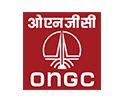
Understand The Key Trends Shaping This Market
Download Free SampleSmart Food Logistics Market Overview: Market Size & Forecast (2026–2034)
What is the anticipated CAGR & size of the Smart Food Logistics Market?
The Smart Food Logistics Market is anticipated to register a CAGR of around 14.55% during the forecast period, 2026-34. Additionally, the market size was valued at nearly USD 15.85 billion in 2025 and is projected to reach almost USD 53.83 billion by 2034.
Market Analysis & Insights
The Smart Food Logistics Market is witnessing quick expansion, instigated by stricter food-safety regulations & increasing e-commerce grocery demand. Also, by 2032–2034, smart solutions for perishables, cold-chain monitoring, and visibility platforms are presumed to thrust total addressable value considerably higher. Along with this, smart food logistics incorporates cold chain monitoring solutions, IoT sensors for food transport, and real-time telematics to ensure food safety compliance, minimize spoilage, and optimize perishable routing.
Moreover, smart food logistics relates to the usage of telematics, AI/ML analytics, connected sensors, and ledger technologies to monitor, track, and control the movement & storage of perishable goods logistics. Further, it covers temperature-controlled transportation, predictive routing, automated compliance records, and digital warehouse controls in order to lower food waste & improve safety.
Furthermore, major growth market drivers include strict guidelines, expansion of online fresh-groceries, and demand to decrease food loss, the latter encouraging investments in asset tracking, food logistics & smart warehousing for food. Also, technology-heavy services (sensor networks, AI analytics, and blockchain food traceability) are being bundled with logistics-as-a-service, providing end-to-end visibility & predictive alerts that reduce shrinkage & insurance values, further leveraging the growth graph of the Smart Food Logistics Industry.
Additionally, leading market providers, such as telemetry & telematics vendors, cold-chain OEMs, and visibility SaaS firms are expanding partnerships & channel programs to address cross-border perishable flows across the Smart Food Logistics Market. For instance, ORBCOMM’s partner program in 2025 and Carrier/Sensitech product developments reflect this momentum.
Besides, acceptance challenges consist legacy fleet retrofits & variable cold-chain infrastructure across regions, however market opportunities in Asia-Pacific cold-chain upgrades & pharma-grade traceability have been aiding in creating positive market outlook. Consequently, the Smart Food Logistics Market’s future projections point to expanding adoption of AI in food logistics & blockchain food traceability that together assist in minimizing waste & solidify brand trust in the forthcoming years.
What is the Impact of AI in the Smart Food Logistics Market?
AI in food logistics enables predictive spoilage detection, dynamic routing, and demand-driven inventory allocation, cutting waste, decreasing costs, and enhancing delivery reliability. Also, AI models integrated with IoT sensor feeds enable real-time decisions for temperature control & perishable lifecycle optimization.
Smart Food Logistics Market Dynamics
What driving factor acts as a positive influencer for the Smart Food Logistics Market?
- Increasing Regulatory & Retailer Necessities for Traceability to Infuse Market Demand: Stringent global guidelines & retailer mandates for provenance & temperature-history reporting force investment across cold chain monitoring solutions & blockchain food traceability to drive industry demand. Further, this inflates recurring-revenue SaaS & sensor sales for visibility platforms and elevates demand for asset tracking food logistics at every node globally. Also, recent market studies illustrate intensified cold-chain spend & platform rollouts in Europe & North America.
What are the challenges that affect the Smart Food Logistics Market?
- Incorporation Complexity in Legacy Fleets & Multiple Stakeholders to Impede Industry: Several SMEs & legacy carriers lack standardized telematics or digital stacks, making end-to-end implementations overpriced, thus resulting in limiting market growth. Also, assimilating IoT sensors for food transport with warehouse TMS/WMS, customs systems, and retailer portals demands APIs, security, and training, suspending ROI for some adopters & instigating project friction. Further, this is a material blocker for rapid scale across regions with uneven logistics providers across the Smart Food Logistics Market.
How are the future opportunities transforming the market during 2026-34?
- Rapid Improvement in Sensor Economics & Edge Analytics: The increasing affordability of sensors presents a substantial market opportunity by enabling extensive deployment of IoT devices that monitor temperature, humidity, shock, and GPS within food logistics. Also, edge analytics decreases connectivity expenditures by filtering irrelevant data, allowing effective micro-deployments like last-mile cool boxes & pooled freight. Moreover, vendors could quickly tap mid-market revenue by providing bundled cold chain monitoring solutions with real-time predictive alerts & user-friendly dashboards. Further, the IoT sensor market’s multibillion-dollar expansion would also contribute to empowering food logistics providers to radically improve asset tracking, food logistics, food safety compliance, and food loss reduction, altering the future of food supply chain technology.

What market trends are affecting the Smart Food Logistics Market Outlook?
- Merging of Telematics, Blockchain & AI for Risk-Aware Routing to Support Market Expansion: Across the global market landscape, prominent companies provide temperature breach forecasts, automated claims evidence, and predictable delivery times by uniting blockchain food traceability, telematics & fleet management, and AI/ML. Also, this convergence promotes service differentiation (e.g., guaranteed freshness SLAs), improves on-shelf freshness, and reduces insurance friction. Further, as customers look for single-pane visibility, expect associations between sensor OEMs, telematics platforms, and data-layer SaaS companies to strengthen between 2024–2026.
How is the Smart Food Logistics Market Defined as per Segments?
The Smart Food Logistics Market Research Reports provide detailed market data & insights in accordance with market segmentation. Some of the segments are:
- Technology: Telematics & Fleet Management, Sensor-based Monitoring Systems, Blockchain for Supply Chain Transparency, Artificial Intelligence (AI) & Machine Learning (ML), Internet of Things (IoT), Big Data & Analytics
- Transportation Mode: Roadways, Railways, Airways, Seaways
By Technology:
The Sensor-based Monitoring Systems segment governs the Smart Food Logistics Market, capturing nearly 66% market share of total real-time monitoring dispositions.
These systems ensure food safety compliance & decrease spoilage by continuously recording temperature, humidity, and location by means of Internet of Things (IoT) sensors for food transit. Also, serving as the foundation of cold chain monitoring systems, they enhance visibility, facilitate predictive analytics, and drive artificial intelligence (AI) in food logistics, further resulting in more intelligent food supply chain management on a global scale.
By Transportation Mode:
The Road transport mode stands as one of the prominent transportation mode in the Smart Food Logistics Market, accounting for 55% market share of food transport.
In the food logistics sector, roadway mobility works commendably with asset monitoring food logistics systems & IoT-based cold chain infrastructure to enable on-time delivery & decrease waste. Moreover, cost-effectiveness & final-mile connection in huge food supply chains support this mode's prevalence.
Smart Food Logistics Industry: Regional Insights
The Smart Food Logistics Market is geographically diversified, covering:
- North America
- Europe
- Asia-Pacific
- The Middle East & Africa
- Latin America
The Asia-Pacific Smart Food Logistics Market dominates the global market, holding over a 35% share & reflecting the uppermost CAGR.
Swift digitization, augmented expenditures in cold chain infrastructure, and government programs promoting food safety compliance & blockchain food traceability are the primary drivers of this growth. By 2034, Asia-Pacific's emphasis on minimizing food loss, together with the usage of cutting-edge IoT sensors, big data analytics, and artificial intelligence (AI) in food logistics, would continue to fuel the expansion of the Global Smart Food Logistics Market.
Smart Food Logistics Market: What Recent Innovations Are Affecting the Industry?
- 2025: ORBCOMM’s CrewView introduced filled maritime visibility gaps for containers at sea, enhancing end-to-end cold chain tracking for cross-border perishable shipments.
- 2025: Sensitech’s Lynx FacTOR & Lynx platform extensions automated release evaluations & expanded multimodal visibility, enabling life-science & food shippers to maintain temperature compliance & augmenting decision-making.
What are the Key Highlights of the Smart Food Logistics Market (2026–34)?
- The quick double-digit upgrade in specialist smart food logistics results in the estimated CAGR of about 14.55% during 2026-34, further recording a projected market value of nearly USD 53.83 billion by 2034.
- By Technology: Sensor-based monitoring systems lead the Smart Food Logistics Market, capturing about 66% market share of total real-time monitoring deployments.
- By Transportation Mode: Roadways lead the transportation mode segment with an impressive market share of around 55%.
- By Application: The Fruits & Vegetables segment governs with the rapid growth & captures nearly 28% market share, instigated by surging demand for fresh produce & innovation in cold chain & sensor-based monitoring technologies.
- By Component: Hardware, mainly RFID tags, sensors, and telematics devices, seize the biggest market share of about 45%.
- By End User: Food Retailers & Distributors is the most prominent segment, accounting for around 38% market share.
- Regionally, the Asia-Pacific Smart Food Logistics Market is predicted to observe the highest CAGR, with government initiatives & digitization driving over 35% market share, making it one of the most promising regions in smart food logistics.
- Across the market, AI aids in optimizing routing, predicting spoilage, automating inventory, and enhancing real-time food logistics efficiency.
How does the Future Outlook of the Smart Food Logistics Market (2034) Appear?
Through 2034, the Smart Food Logistics Market would be evidently more automated & technology-based. Widespread adoption of blockchain food traceability & smart warehousing for food supports retailer service level agreements (SLAs), while wide-ranging incorporation of IoT sensors, integrated cold chain monitoring, and advanced AI in food logistics minimizes food loss & claims. Further, instigated by stringent regulations, expanding e-commerce, and sustainability mandates, the industry is destined for consistent CAGR growth, generating recurring revenue opportunities for SaaS providers & sensor hardware producers, driving the market in the forecast years.
What Does Our Smart Food Logistics Market Research Study Entail?
- The Smart Food Logistics Market Research Report highlights the forecast growth rate (CAGR) by anticipating the market size and share.
- The market analysis & market scope sheds light upon the primary industry trends, driving aspects, potential opportunities, growth challenges, and other major factors.
- The Smart Food Logistics Market Research Report entails details about the most critical shifts in market share in the prominent regions.
- Considering the statistics & the developments by the primary market competitors, our report also strives to demonstrate the most sought-after strategies of the key players.
Table of Contents
- Introduction
- Objective of the Study
- Product Definition
- Market Segmentation
- Study Variables
- Research Methodology
- Secondary Data Points
- Companies Interviewed
- Primary Data Points
- Break Down of Primary Interviews
- Secondary Data Points
- Executive Summary
- Market Dynamics
- Drivers
- Challenges
- Opportunity Assessment
- Recent Trends and Developments
- Policy and Regulatory Landscape
- Smart Food Logistics Market Overview
- Market Size, By Value (in USD Billion)
- Market Share, By Technology
- Telematics & Fleet Management
- Sensor-based Monitoring Systems
- Blockchain for Supply Chain Transparency
- Artificial Intelligence (AI) & Machine Learning (ML)
- Internet of Things (IoT)
- Big Data & Analytics
- Market Share, By Transportation Mode
- Roadways
- Railways
- Airways
- Seaways
- Market Share, By Application
- Transportation Services
- Warehousing Services
- Packaging Solutions
- Market Share, By Component
- Hardware
- Software
- Services
- Market Share, By Service Model
- Asset-Based Logistics
- Non-Asset-Based Logistics
- Third-Party Logistics (3PL)
- Fourth-Party Logistics (4PL)
- Market Share, By Region
- North America
- Europe
- Asia-Pacific
- The Middle East & Africa
- Latin America
- Market Share, By Company
- Revenue Shares
- Competition Characteristics
- Segment-wise / Industry-wise Market Overview
- By Value (in USD Billion)
- By Technology, 2026–2034
- By Transportation Mode, 2026–2034
- By Application, 2026–2034
- By Component, 2026–2034
- By Service Model, 2026–2034
- Competitive Outlook (Company Profiles)
- ORBCOMM Inc.
- Company Overview
- Business Segments
- Strategic Alliances/Partnerships
- Recent Developments
- Sensitech Inc. (Carrier Global)
- Company Overview
- Business Segments
- Strategic Alliances/Partnerships
- Recent Developments
- Berlinger & Co. AG
- Company Overview
- Business Segments
- Strategic Alliances/Partnerships
- Recent Developments
- Geotab Inc.
- Company Overview
- Business Segments
- Strategic Alliances/Partnerships
- Recent Developments
- Kii Corporation
- Company Overview
- Business Segments
- Strategic Alliances/Partnerships
- Recent Developments
- Monnit Corporation
- Company Overview
- Business Segments
- Strategic Alliances/Partnerships
- Recent Developments
- Controlant
- Company Overview
- Business Segments
- Strategic Alliances/Partnerships
- Recent Developments
- Samsara Networks, Inc.
- Company Overview
- Business Segments
- Strategic Alliances/Partnerships
- Recent Developments
- Teletrac Navman
- Company Overview
- Business Segments
- Strategic Alliances/Partnerships
- Recent Developments
- Seaos
- Company Overview
- Business Segments
- Strategic Alliances/Partnerships
- Recent Developments
- Hacobu Co., Ltd. (MOVO)
- Company Overview
- Business Segments
- Strategic Alliances/Partnerships
- Recent Developments
- Nippon Express Co. Ltd
- Company Overview
- Business Segments
- Strategic Alliances/Partnerships
- Recent Developments
- YUSEN LOGISTICS CO. LTD
- Company Overview
- Business Segments
- Strategic Alliances/Partnerships
- Recent Developments
- LYNA LOGICS
- Company Overview
- Business Segments
- Strategic Alliances/Partnerships
- Recent Developments
- Kouei System Ltd
- Company Overview
- Business Segments
- Strategic Alliances/Partnerships
- Recent Developments
- ORBCOMM Inc.
- Contact Us & Disclaimer
List of Figure
Figure 1: Research Methodology Framework
Figure 2: Data Triangulation Approach
Figure 3: Breakdown of Primary Interviews by Region, Company Type, and Designation
Figure 4: Smart Food Logistics Market Size (USD Billion), 2025–2034
Figure 5: Smart Food Logistics Market Share, by Technology (2025)
Figure 6: Smart Food Logistics Market Share, by Transportation Mode (2025)
Figure 7: Smart Food Logistics Market Share, by Application (2025)
Figure 8: Smart Food Logistics Market Share, by Component (2025)
Figure 9: Smart Food Logistics Market Share, by Service Model (2025)
Figure 10: Smart Food Logistics Market Share, by Region (2025)
Figure 11: Global Smart Food Logistics Value Chain Overview
Figure 12: Key Market Drivers for Smart Food Logistics
Figure 13: Major Market Challenges
Figure 14: Emerging Market Opportunities (2026–2034)
Figure 15: Adoption of IoT and Telematics in Smart Food Logistics
Figure 16: Impact of AI and Blockchain on Food Supply Chain Transparency
Figure 17: Integration of Big Data Analytics in Predictive Logistics
Figure 18: Recent Technological Developments in Smart Logistics
Figure 19: Market Forecast by Technology, 2026–2034 (USD Billion)
Figure 20: Market Forecast by Transportation Mode, 2026–2034 (USD Billion)
Figure 21: Market Forecast by Application, 2026–2034 (USD Billion)
Figure 22: Market Forecast by Component, 2026–2034 (USD Billion)
Figure 23: Market Forecast by Service Model, 2026–2034 (USD Billion)
Figure 24: Regional Market Size Comparison (USD Billion), 2026–2034
Figure 25: North America Smart Food Logistics Market Size Forecast (2026–2034)
Figure 26: Europe Smart Food Logistics Market Size Forecast (2026–2034)
Figure 27: Asia-Pacific Smart Food Logistics Market Size Forecast (2026–2034)
Figure 28: Middle East & Africa Smart Food Logistics Market Size Forecast (2026–2034)
Figure 29: Latin America Smart Food Logistics Market Size Forecast (2026–2034)
Figure 30: Market Share of Key Players, 2025 (Revenue %)
Figure 31: Competitive Positioning of Leading Companies (2025)
Figure 32: Strategic Alliances and Partnerships Across Key Market Players
Figure 33: Recent Mergers, Acquisitions, and Investments in Smart Food Logistics
Figure 34: Innovation Focus Areas of Leading Companies
Figure 35: Smart Food Logistics Market Growth Projection (2025–2034)
Figure 36: Key Success Factors for Market Participants
List of Table
Table 1: Summary of Key Study Objectives
Table 2: Product Definition and Scope of Smart Food Logistics
Table 3: Market Segmentation Overview
Table 4: Key Study Variables and Indicators
Table 5: List of Companies Interviewed (Primary Sources)
Table 6: Breakdown of Primary Interviews by Region, Company Type, and Designation
Table 7: Global Smart Food Logistics Market Size, 2025–2034 (USD Billion)
Table 8: Smart Food Logistics Market Share by Technology, 2025
Table 9: Smart Food Logistics Market Share by Transportation Mode, 2025
Table 10: Smart Food Logistics Market Share by Application, 2025
Table 11: Smart Food Logistics Market Share by Component, 2025
Table 12: Smart Food Logistics Market Share by Service Model, 2025
Table 13: Smart Food Logistics Market Share by Region, 2025
Table 14: Drivers and Their Impact on Market Growth
Table 15: Key Challenges and Restraints
Table 16: Opportunity Assessment, 2026–2034
Table 17: Recent Technological Developments in Smart Food Logistics
Table 18: Adoption of Key Technologies by Logistics Providers
Table 19: Regional Market Size Comparison, 2026–2034 (USD Billion)
Table 20: North America Smart Food Logistics Market Forecast, 2026–2034 (USD Billion)
Table 21: Europe Smart Food Logistics Market Forecast, 2026–2034 (USD Billion)
Table 22: Asia-Pacific Smart Food Logistics Market Forecast, 2026–2034 (USD Billion)
Table 23: Middle East & Africa Smart Food Logistics Market Forecast, 2026–2034 (USD Billion)
Table 24: Latin America Smart Food Logistics Market Forecast, 2026–2034 (USD Billion)
Table 25: Comparative Analysis of Service Models (Asset-Based, Non-Asset-Based, 3PL, 4PL)
Table 26: Key Partnerships and Strategic Alliances Among Leading Players
Table 27: Competitive Landscape – Market Share of Key Companies, 2025
Table 28: Company Profiles Overview
Table 29: Summary of Key Developments by Leading Companies
Table 30: SWOT Analysis of Major Players
Table 31: Smart Food Logistics Industry Value Chain Analysis
Table 32: Key Success Factors and Future Outlook, 2026–2034
Top Key Players & Market Share Outlook
- ORBCOMM Inc.
- Sensitech Inc. (Carrier Global)
- Berlinger & Co. AG
- Geotab Inc.
- Kii Corporation
- Monnit Corporation
- Controlant
- Samsara Networks, Inc.
- Teletrac Navman
- Seaos
- Hacobu Co., Ltd. (MOVO)
- Nippon Express Co. Ltd
- YUSEN LOGISTICS CO. LTD
- LYNA LOGICS
- Kouei System Ltd
Frequently Asked Questions








